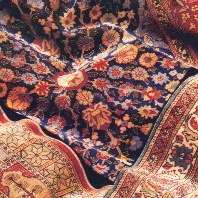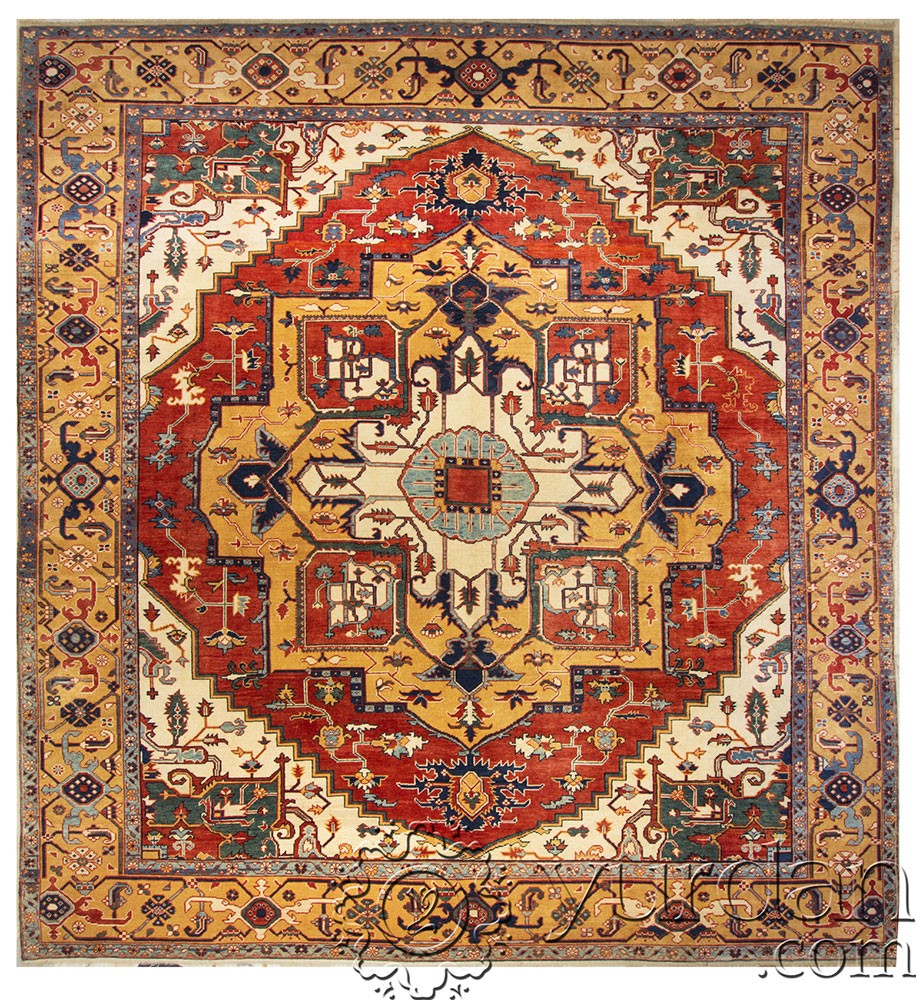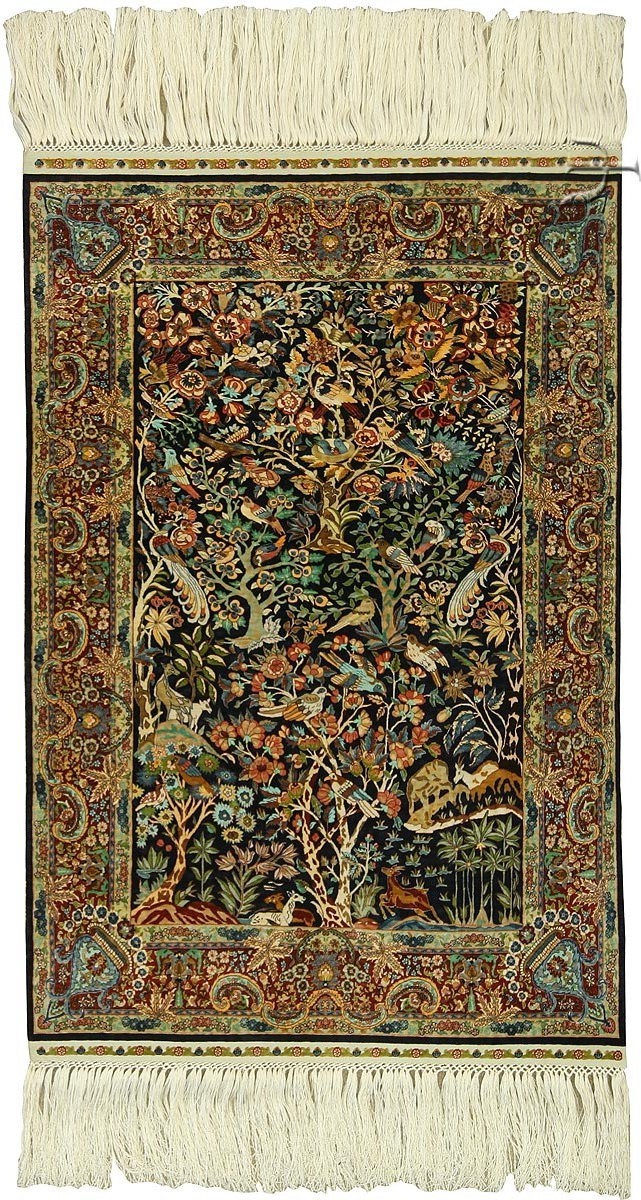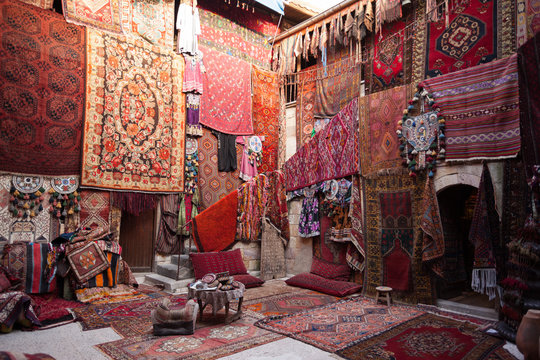Step into a world of timeless elegance and unparalleled craftsmanship as we embark on a journey through the rich heritage and exquisite designs of Turkish rugs. For centuries, these masterpieces have captivated the hearts of art enthusiasts and interior design connoisseurs alike, showcasing the true essence of Turkish artistry.
Each Turkish rug tells a story, woven with precision and passion. From the intricate patterns to the vibrant colors, every detail is a testament to the remarkable skills passed down through generations of skilled artisans. The combination of traditional techniques and modern sensibilities results in rugs that seamlessly blend tradition and contemporary design, making them highly sought-after in today's world.
But it's not just the visual appeal that sets Turkish rugs apart. The art of rug making holds deep cultural significance in Turkey, with certain designs symbolizing love, protection, and the celebration of life's moments. With each rug, you not only bring home a piece of stunning artwork but also a piece of Turkish history and culture.
Join us as we take a closer look at the intricate knots, vibrant colors, and astonishing beauty of Turkish rugs, exploring the stories they tell and the lasting legacy they leave behind. Immerse yourself in the artistry and heritage that make Turkish rugs truly timeless treasures.



Turkish rugs have a long and storied history that dates back thousands of years. The art of rug making in Turkey can be traced back to the Bronze Age, with evidence of early rug fragments found in ancient burial mounds. However, it was during the Seljuk and Ottoman periods that Turkish rugs truly flourished.
During the Seljuk period, Turkish rugs were primarily produced for practical purposes, such as insulation and protection against the cold. However, as the Ottoman Empire rose to prominence, rugs became a symbol of wealth and status. They were used to adorn palaces, mosques, and the homes of the elite.
One of the most fascinating aspects of Turkish rugs is the symbolism and meaning behind their designs. Each pattern and motif tells a story, reflecting the rich cultural heritage of Turkey. For example, the "Tree of Life" design symbolizes fertility and the cycle of life, while the "Elibelinde" motif represents femininity and motherhood.
In addition to these symbolic designs, Turkish rugs often feature geometric patterns and stylized floral motifs. These motifs are not only aesthetically pleasing but also hold deep cultural significance. They reflect the spiritual beliefs and values of the Turkish people, as well as their connection to nature and the divine.
Turkish rugs come in a wide variety of styles and designs, each with its own unique characteristics. Some of the most well-known types include the Anatolian, Oushak, and Kilim rugs.
Anatolian rugs, also known as Turkish carpets, are renowned for their intricate designs and rich colors. They are often characterized by their geometric patterns and are woven using the double knot technique, which results in a dense and durable rug.
Oushak rugs, on the other hand, are known for their soft, pastel colors and large-scale patterns. They are woven using the Ghiordes knot technique, which creates a plush and luxurious pile.
Kilim rugs, also known as flatweaves, are woven without knots. They have a flat and reversible surface, making them ideal for use as decorative wall hangings or floor coverings.

The art of Turkish rug making involves a meticulous process that requires skill and precision. Traditional Turkish rugs are typically made from wool, which is sourced from local sheep. The wool is carefully washed, carded, and spun into yarn, ready for weaving.
The most common technique used in Turkish rug making is the double knot technique, also known as the Turkish knot or Ghiordes knot. This technique involves looping the yarn around two warp threads and then tying a knot, resulting in a dense and durable rug. Another technique used in Turkish rug making is the single knot technique, also known as the Senneh knot, which creates a finer and more intricate design.
Creating a Turkish rug is a labor-intensive process that requires time, patience, and skill. The process begins with the design, which is often passed down through generations or inspired by nature and everyday life. Once the design is finalized, the weaver starts the process of warping the loom, which involves setting up the vertical threads that form the foundation of the rug.
After the loom is warped, the weaver begins the process of knotting the rug. This involves carefully tying each knot using the chosen technique, row by row. As the rug takes shape, the weaver adds the desired colors and patterns, creating a stunning work of art.
Once the weaving is complete, the rug is removed from the loom and undergoes a series of finishing processes, including washing, shearing, and stretching. These processes help to enhance the colors and textures of the rug, giving it a polished and refined appearance.

Turkish rug designs are influenced by a variety of cultural and artistic factors. Over the centuries, Turkey has been a crossroads of civilizations, with influences from the Byzantine, Persian, and Central Asian cultures. These diverse influences are reflected in the intricate patterns and motifs found in Turkish rugs.
The geometric patterns often seen in Turkish rugs are reminiscent of the Islamic art found in mosques and palaces. These patterns are not only visually striking but also hold deep spiritual significance, representing the order and harmony of the universe.
In addition to Islamic art, Turkish rug designs also draw inspiration from nature. Stylized floral motifs, such as the "Gul" or rose motif, are commonly found in Turkish rugs. These motifs symbolize beauty, fertility, and rebirth, reflecting the deep connection between the Turkish people and the natural world.
To ensure the longevity and beauty of your Turkish rug, proper care and maintenance are essential. Here are some tips to help you care for your rug:
By following these simple care guidelines, you can ensure that your Turkish rug remains a cherished heirloom for generations to come.

When it comes to purchasing authentic Turkish rugs, it is important to be diligent and do your research. With the increasing popularity of Turkish rugs, there has been a rise in counterfeit products and mass-produced imitations.
To ensure that you are buying an authentic Turkish rug, consider the following:
By following these guidelines, you can ensure that you are investing in an authentic Turkish rug that will bring beauty and joy to your home for years to come.
Turkish rugs are more than just beautiful floor coverings – they are true works of art that embody the rich heritage and exquisite craftsmanship of Turkey. From the intricate patterns to the vibrant colors, each rug tells a unique story, reflecting the cultural and artistic influences that have shaped Turkish rug making throughout the centuries.
By bringing home a Turkish rug, you not only add a touch of elegance to your space but also a piece of history and culture. These timeless treasures are more than just decorative items – they are a testament to the enduring beauty and artistry of Turkish rugs. So, immerse yourself in the world of Turkish rugs and experience the magic of these extraordinary masterpieces.
Here is our Turkish Rugs Collection.